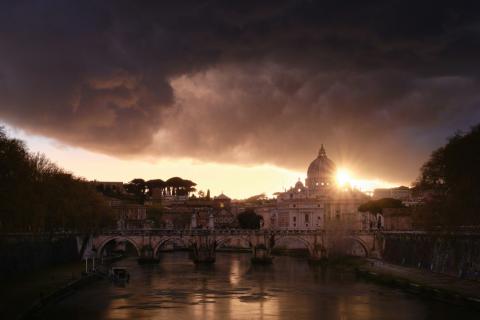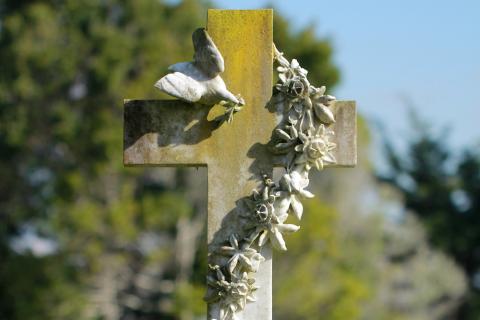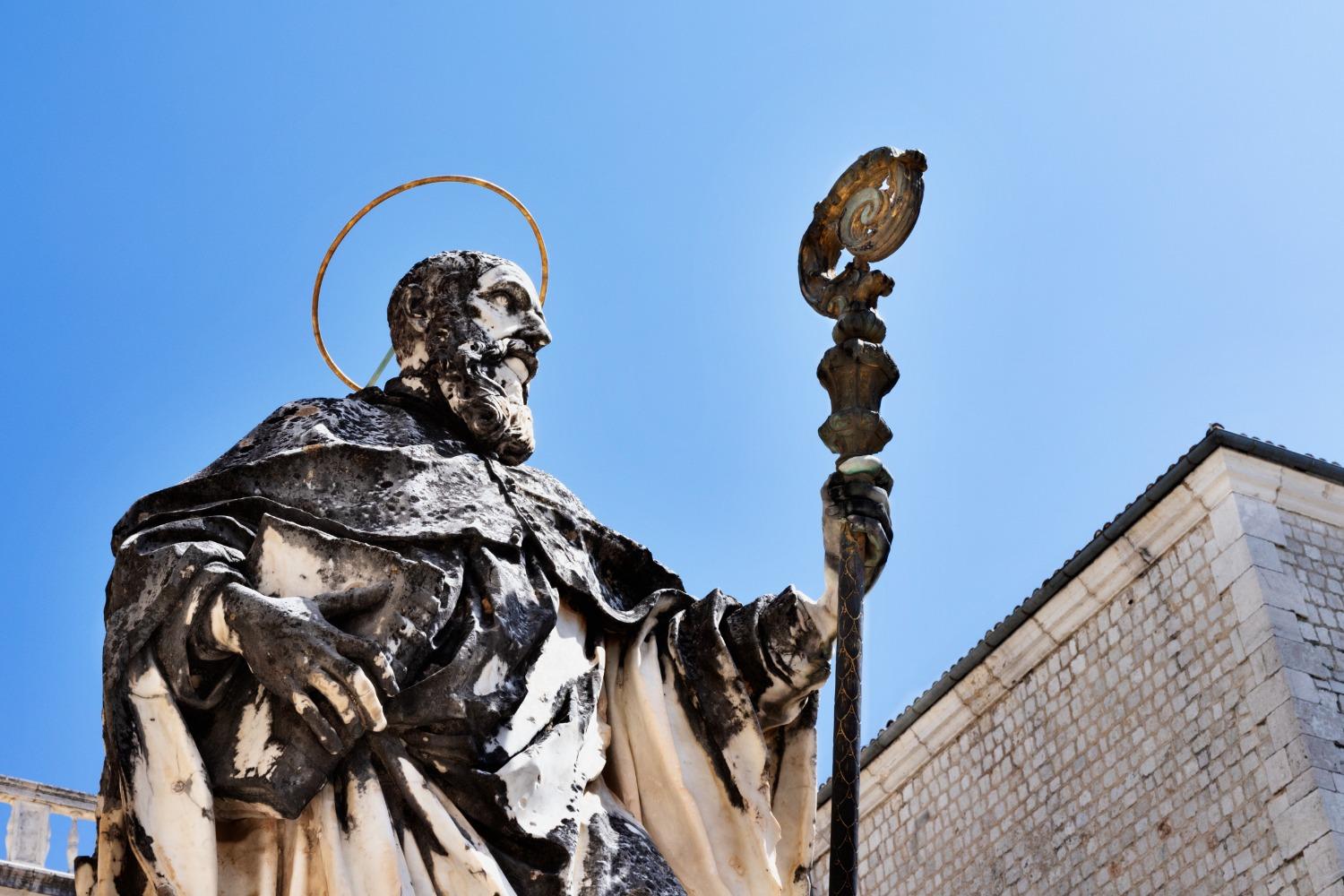
The University of Mary requires every undergraduate student to complete a course called Benedict, Yesterday and Today. Designating a course as a required part of every student’s degree is no small decision. While few informed Catholics would be perplexed to find that a Catholic university has introductory philosophy and theology requirements, our reason for requiring a course on St. Benedict may not be as immediately clear. Many draw the conclusion that, as a Benedictine university, we simply want our students to know something of their own educational heritage. It is true that this rich heritage is one of several factors behind the requirement, but this is not the originating and central goal of the course.
To study the life and legacy of Benedict is not merely to study one particular religious development, but also to enter into an important case study of the relationship between religion and culture. Exploring the Benedictine tradition and its formative impact on European civilization involves investigating social, cultural, and religious dynamics, offering an interpretive key for understanding our own religious and cultural situation today.
As a young man, Benedict left his studies in Rome in pursuit of the Gospel. His time was unlike ours in an important way: while we stand in the midst of a culture moving away from its Christian foundations, Benedict’s disenchantment arose in response to the spiritual laxity that accompanied the Christian culture of his time. Leaving Rome behind, the young saint made his way to a cave in the mountain wilderness of Subiaco, dedicating himself to a life of solitude and prayer. Eventually, young men began to seek his guidance, leading him to found numerous monasteries. It was at one of these monasteries – Monte Cassino, eventually the most famous – that Benedict wrote his monastic Rule to direct the lives of his monks, covering everything from daily schedules to liturgical services to the care of the monastery’s material possessions. After a lifetime of profound commitment to the Gospel in the quiet of monastic life, St. Benedict passed from this life, having discovered a path to sanctity in hiddenness, far from the public square.
But through the surprising mysteries of Providence, Benedict’s legacy didn’t cease at the gates of Monte Cassino. Over the course of centuries, his Rule spread throughout Christendom as new monasteries were founded according to its precepts and old monasteries rearranged themselves to conform to it. At their peak, 37,000 Benedictine monasteries and priories dotted Christendom, producing 1,500 saints, thousands of bishops, hundreds of cardinals, and two dozen popes. Were one to walk across Europe in the Middle Ages, one would have encountered numerous languages, shifting borders, and chronic tensions and wars. But on that same journey, one would have been confronted by the constant presence of the Benedictines, living the same expression of the Christian faith, meeting at the same times to pray the same psalms in the same language. Amidst the diversity of the Christian peoples of the West, one would find no greater expression of the unity of the Christian faith than the Benedictines.
These monasteries often served not only as islands of Christian practice but also as centers of education, innovation, and economic prosperity. The great ideal of Benedictine life is ora et labora – pray and work. This means that the monks and nuns in Benedict’s tradition have been devoted to the beauty of liturgical prayer as well as engaging in the manual labor and trades necessary to support the monastic community’s needs. Monasteries possessed the manpower and centuries-long vision necessary to transform barren wildernesses into habitable, arable land. The single-minded and communal quality of monastic life led to great innovations in agriculture and industry that spread throughout the continent. Their need to reproduce texts for prayer and study gradually led to the development of great libraries of classical works of the Great Tradition. Their need to train novices in reading, chant, and the monastery’s particular trades spilled over into the development of educational programs accessible to those who were not a part of the monastic community. Whatever the tumults of the world, the Benedictine devotion to liturgical prayer and manual labor turned their monasteries into oases of stability and culture.
Pilgrims who visit Benedict’s cave at Subiaco today will find, in addition to statues of a cross and a young Benedict praying, a golden candle-stand inscribed with the word Europa. The candle’s quiet claim is worth exploring: somehow, a considerable aspect of the European civilization of the centuries that followed the life of Benedict arises from that cave.
Amidst the diversity of the Christian peoples of the West, one would find no greater expression of the unity of the Christian faith than the Benedictines.
Throughout human history, religion has served as the cohering principle of culture. In every age and place, societies have arranged and expressed themselves according to their shared vision of the cosmos, the story in which they understood themselves to be living. From this vision arises their moral values and principles, as well as their artistic, social, and institutional expressions. To say that religion serves as the cohering principle of a culture means that to understand any given culture, one must understand its religious vision. At the same time, this is not to deny the role of other factors in shaping culture. In the case of the Christian civilization of centuries past, it was precisely a shared Christian vision that united and enlivened the culture, even across generations and borders. This is not to diminish the cultural impact and achievements of the ancient Greeks and Romans, Celts and Franks and Germans. Instead, it is to say that the Christian vision of the world served as the factor that determined whether and how those ancestral achievements were assimilated into their burgeoning civilizations.
So, in what sense can we defend the candle’s claim that Benedict’s cave was a wellspring of the European civilization of the centuries that followed? While Benedict himself lived during the twilight of the Roman world before Europe had yet sprung to life, the religious spirit carried by Benedict and the monasteries in his legacy permeated that emerging European world. The Benedictines made Christian unity and life tangible in expressions and practices across that multi-national civilization, keeping stability from one generation to the next.
The centrality and enduring nature of Benedict’s legacy throughout Europe’s Christian centuries mean that a course on Benedict provides an opportunity to bring together many key educational topics in an integrated fashion. By studying Benedict, students encounter the figure who founded our educational tradition at the University of Mary. By studying Benedict’s legacy, students are given a window through which to view many significant developments throughout Christian and world history. In this course, they are inserted into one of the most vibrant spiritual and theological traditions of the Church, and they explore an important example and case study in the vital relationship between religion and culture.
In our own age, defined largely by misunderstandings and heated debate about the relationship between religion and culture, Benedict and his legacy can provide relief and clarity. Through a thoughtfully-presented and engaging Benedictine case study, even students who have yet to become concerned with questions of religion (and may even resent their required attendance in such a course) will be given a glimpse of how a life given over to God is a life well lived and offered a corrective to the modern notion that human societies are somehow better off when distanced from religion. Professors will know they have succeeded in the central goal of the course not when their students leave with a parochial interest in or appreciation for the monastic vocation, but when students leave with a deeper grasp of how religion shapes culture, how Christianity has impacted our own culture (both historically and in our modern age), and how a spiritual vision is necessary for ordering a meaningful human life.
But for young Christians discerning their vocation and filled with high-hearted desires to see healing and renewal come to our culture, Benedict also serves as a frank reminder – and perhaps warning – of the primacy of the Gospel: Benedict shaped civilization precisely because his commitment to the Gospel drove him to “prefer nothing whatever to Christ.” It was only because Benedict desired to follow the Gospel above all else, even to the point of leaving everything behind, that he took the steps necessary – mysteriously unknown even to himself – to have an enduring impact on civilization for centuries to come. Had Benedict placed the Gospel second and a desire to renew civilization first, European culture (and the West today) would likely have been very different; the renewal may never have come.
Further Reading
- Pope Benedict XVI’s 2008 “Address to Representatives from the World of Culture” at the Collège des Bernardins
- Christopher Dawson, Christianity and European Culture
- St. John Henry Newman, A Benedictine Education
- Russell Hittinger, “What St. Benedict Teaches the Dark Ages – His and Ours” on Prime Matters
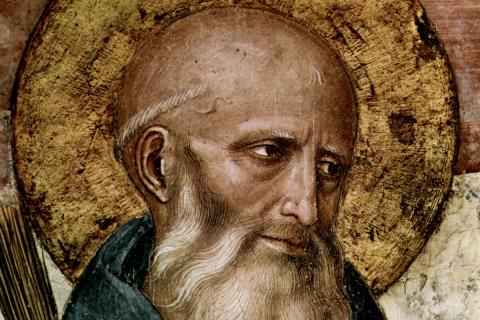
Saint Benedict and the School of Life
Saint Benedict taught us that the key to living a rich, full, and useful human life is to keep our eyes fixed on the things of God.
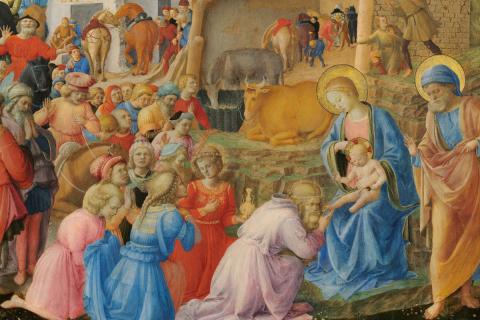
Liturgy: The Basis of Christian Culture
Unless the temporal activity of social life goes forward within a framework of leisure and liturgy, it becomes misshapen. Liturgy conforms the whole of life to the harmonies of heaven.

What St. Benedict Teaches the Dark Ages – His and Ours
In the midst of the evening of a civilization, St. Benedict and his monks rediscovered how to live life as an organic whole, providing a "curriculum" for those seeking to live in the light.
